Overview
The title "10 Key Features for Successful On Demand App Development" highlights essential elements crucial for the effective development of on-demand applications. To thrive in today’s competitive market, integrating features like:
- Geolocation
- Secure payment gateways
- User-friendly design
- Push notifications
- Robust customer support systems
is not just beneficial; it’s vital.
Geolocation allows users to access services tailored to their location, enhancing convenience and satisfaction. Secure payment gateways ensure that transactions are safe, building trust and encouraging user engagement. A user-friendly design is paramount; it simplifies navigation and enhances the overall experience, making users more likely to return. Push notifications keep users informed and engaged, driving interaction with the app. Finally, robust customer support systems provide the necessary assistance, ensuring users feel valued and supported.
Incorporating these features not only enhances user experience but also ensures security and drives engagement. As you consider developing an on-demand app, remember that these elements are not optional; they are essential for success. Embrace these features to elevate your app and stand out in a crowded marketplace.
Introduction
In today’s fast-paced digital landscape, the demand for on-demand applications is skyrocketing, compelling developers to innovate and adapt like never before. This article explores ten essential features that can determine the success of on-demand app development. These elements not only enhance user experience but also ensure security and foster engagement. But with countless options available, what truly sets a standout application apart from the competition? By examining these key features, we can uncover the critical factors that not only meet user expectations but also drive long-term success in a fiercely competitive market.
SDA: Custom Software Development for On-Demand Apps
SDA stands at the forefront of custom software development, specializing in applications that demand immediate access. By harnessing advanced technologies and a user-centric design philosophy, SDA guarantees that each application is tailored to meet the distinct needs of its clients. Their dedicated development teams collaborate closely with product owners, crafting solutions that are not only functional but also strategically aligned with overarching business goals. This commitment to innovation makes SDA the preferred partner for organizations eager to excel in the on-demand landscape.
Why settle for generic solutions when you can have software that truly reflects your business vision? SDA’s expertise ensures that your applications are built with precision and purpose, driving your organization forward. With a proven track record of success, SDA is ready to help you navigate the complexities of software development.
Take the next step towards innovation. Partner with SDA and transform your ideas into reality.
Geolocation: Real-Time Tracking for Enhanced User Experience
Incorporating geolocation features into applications is not just an enhancement; it’s a necessity for modern interaction. For ride-sharing applications, geolocation is pivotal, delivering precise arrival times and enabling effective route monitoring. This functionality fosters trust and satisfaction among users, which is essential in a competitive market. Consider this: applications that offer real-time tracking have shown a significant boost in retention rates. In fact, 88% of individuals are less likely to return after a negative experience (source: UXCam).
Moreover, prioritizing user-initiated geolocation requests can significantly enhance trust. These requests consistently score higher on trust scales compared to automatic prompts, reinforcing the importance of user agency in the digital experience. As the ride-sharing sector evolves towards enhanced safety tools and multi-service integration by 2025, the incorporation of these geolocation features will be crucial. Meeting customer expectations and sustaining a competitive advantage hinges on this integration.
In summary, the future of ride-sharing relies on the strategic implementation of geolocation capabilities within on demand app development. It’s time to embrace these advancements and ensure your application stands out in a crowded marketplace.
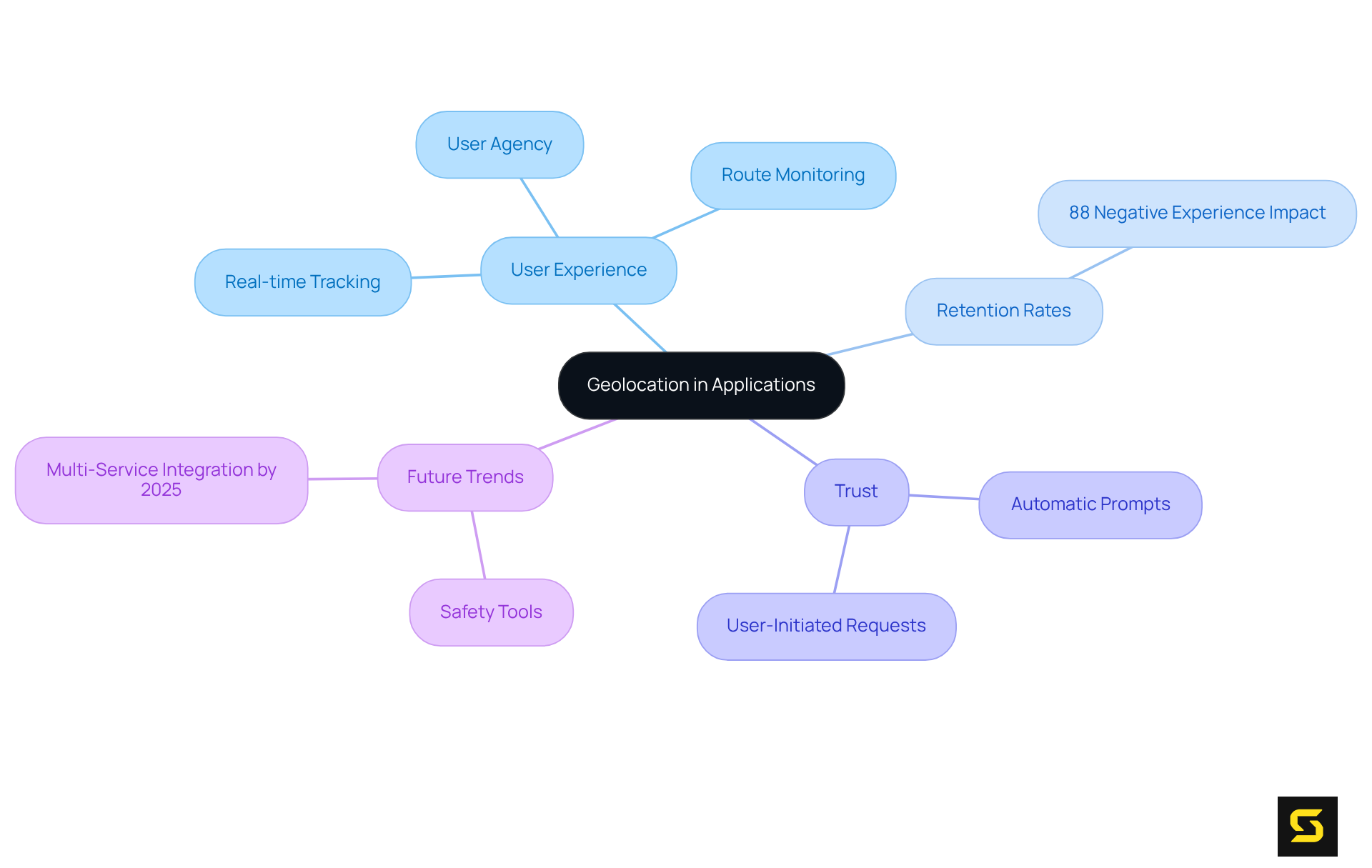
Secure Payment Gateway: Building Trust Through Safe Transactions
Implementing a secure payment gateway is not just a feature; it’s a necessity for any on-demand application that processes transactions. This critical component safeguards sensitive individual information and significantly boosts the overall credibility of the app. By employing robust encryption methods and adhering to industry standards, developers can create a secure environment for clients. This security is essential for maintaining customer trust and promoting repeat business.
Consider the implications: a secure payment gateway not only protects your users but also enhances your brand's reputation. When customers feel safe, they are more likely to engage with your app repeatedly. In today’s digital landscape, where data breaches are all too common, establishing a secure payment system is a decisive step toward fostering loyalty and driving growth.
In conclusion, prioritizing a secure payment gateway is vital for your app's success. Don’t leave your customers’ sensitive information to chance—invest in security today to ensure a trustworthy and reliable user experience.
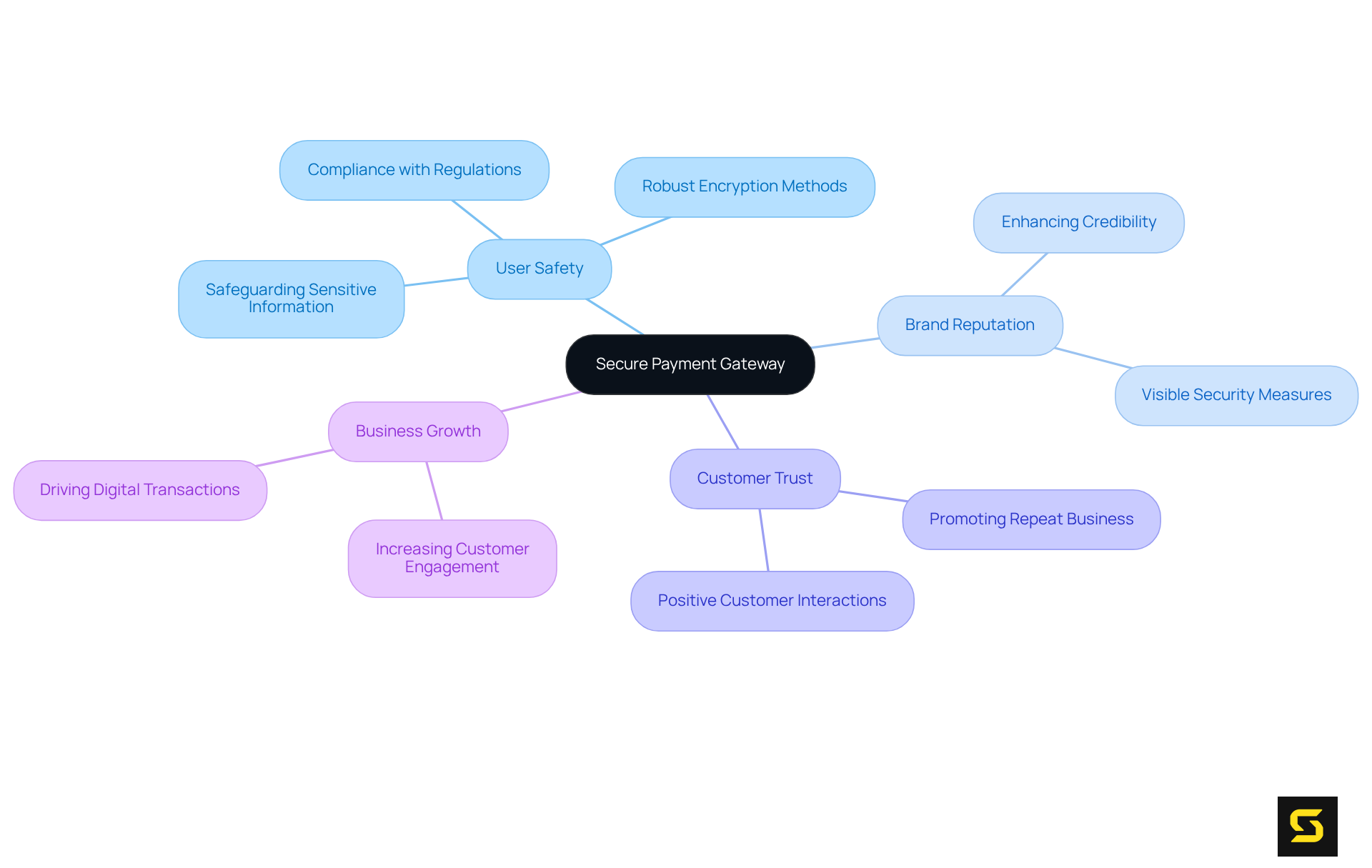
User-Friendly UI/UX Design: Enhancing Engagement and Satisfaction
A user-friendly UI/UX design is essential for boosting engagement and satisfaction in on demand app development. By prioritizing intuitive navigation, mobile-specific interactions like touch gestures and voice commands, and visual appeal, developers can create an environment that encourages users to engage with the app more frequently. Effective design not only draws users in but also keeps them engaged, making it a vital element of successful on demand app development.
Moreover, enhancing loading speed and ensuring application performance are critical for customer satisfaction. Sluggish apps can frustrate users and lead to abandonment. Research indicates that 79% of users are likely to abandon a mobile app if it proves difficult to use, underscoring the importance of seamless navigation. A well-crafted interface not only improves navigation but also enhances engagement, leading to positive outcomes.
Prioritizing user-centric design, coupled with thorough research to understand the target audience's needs, is crucial for fostering loyalty. This approach can achieve an impressive 400% increase in conversion rates. In today's competitive landscape, investing in a robust UI/UX design is not just beneficial; it's imperative for success.
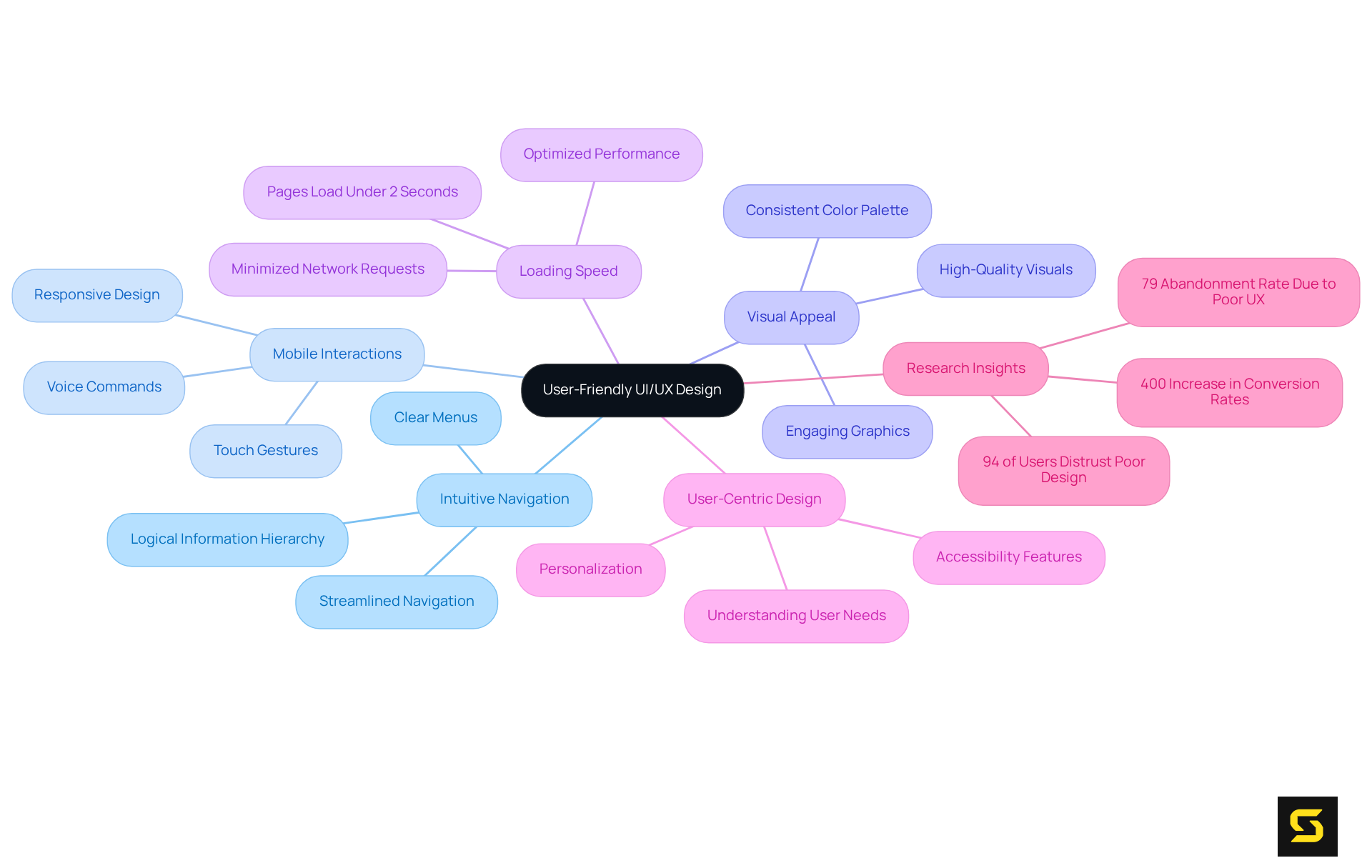
Push Notifications: Keeping Users Engaged and Informed
Push notifications are a vital communication channel between applications and users, delivering timely updates and personalized messages that keep individuals informed about new features, promotions, and critical alerts. This proactive engagement strategy significantly enhances the participant experience, fostering a sense of connection and relevance. By implementing best practices, such as segmenting notifications based on user behavior and preferences, developers can ensure that their messages resonate with the audience. In fact, personalized notifications can lead to conversion rates that are up to four times higher than generic messages, underscoring their effectiveness in boosting engagement.
Moreover, the timing of push notifications is crucial to their success. Notifications sent during peak activity periods can dramatically elevate engagement rates. A study revealed that apps employing effective push notification strategies saw a 60% increase in active participants within three months. This highlights the potential of push notifications not just as a communication tool but as a powerful mechanism for improving retention and app stickiness.
Integrating onboarding screens that encourage users to opt into push notifications can further enhance engagement. Data indicates that apps with such features experience 56.25% greater stickiness compared to those that do not. By prioritizing transparency and choice in notification settings, developers can build trust and encourage users to stay engaged with the app over time. Ultimately, the strategic use of push notifications is essential for driving sustained app usage and achieving long-term success in the competitive mobile landscape.
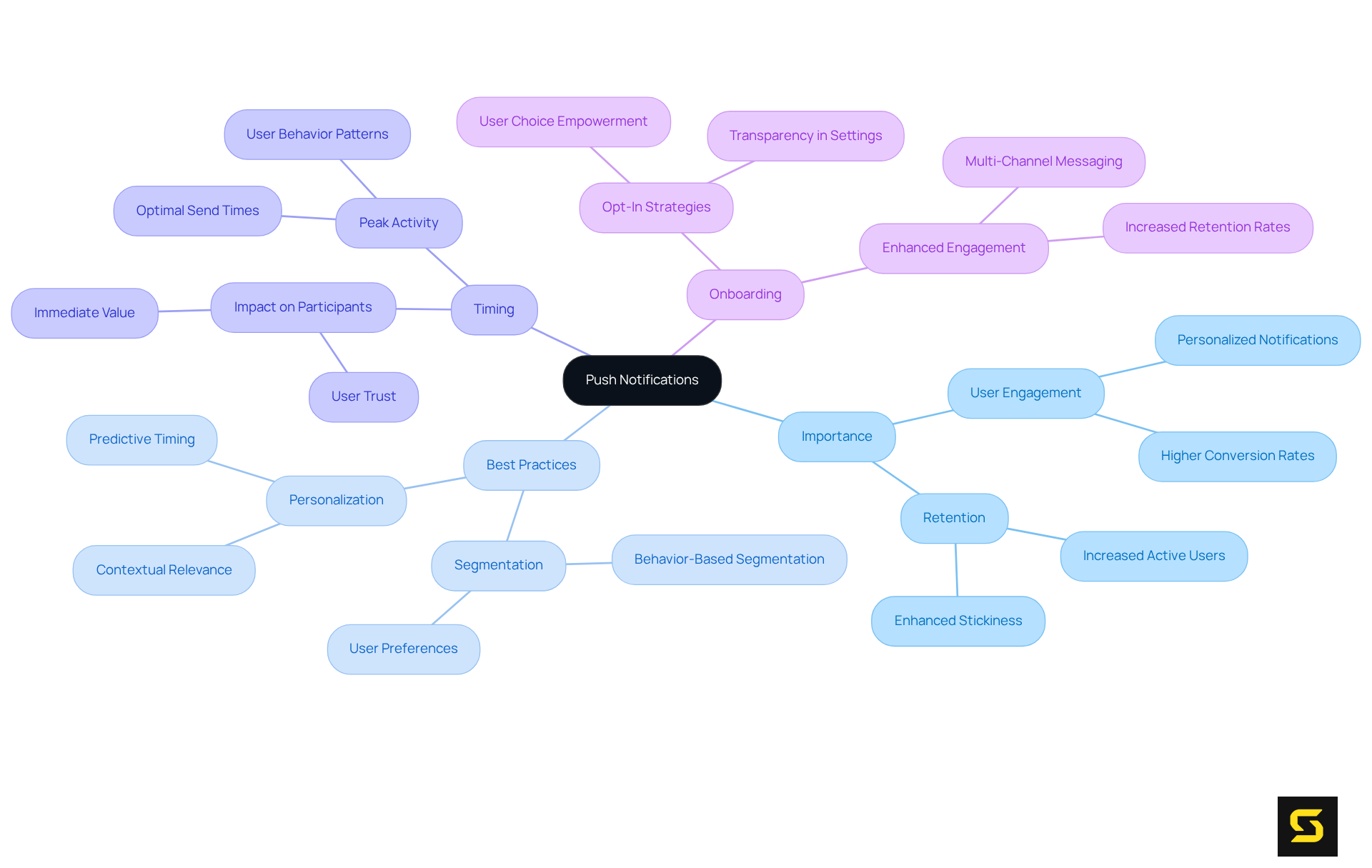
In-App Communication: Facilitating Seamless User-Provider Interaction
In-app communication tools, including chat features and messaging systems, are essential for fostering seamless interactions between individuals and service providers. This functionality is particularly critical in on demand app development, where timely communication can significantly enhance customer satisfaction. For instance, delivery personnel can promptly inform customers about additional fees or confirm delivery locations, showcasing how effective communication can resolve issues in real-time.
Statistics reveal that efficient in-app messaging can reduce booking cancellations by up to 50% and boost gross transaction value (GTV), underscoring its vital role in customer retention and engagement. By allowing users to ask questions or resolve issues directly within the app, developers not only streamline the service process but also empower customers to make informed decisions.
As we look ahead to 2025, the significance of these messaging features is undeniable. They are pivotal in optimizing service interactions and enhancing overall customer satisfaction (CSAT). The integration of chat functionalities in on demand app development enriches the user experience by enabling real-time communication, which is crucial for addressing concerns and ensuring a smooth service delivery process.
In summary, investing in robust in-app communication tools is not just beneficial; it is imperative for any service provider aiming to thrive in a competitive landscape.
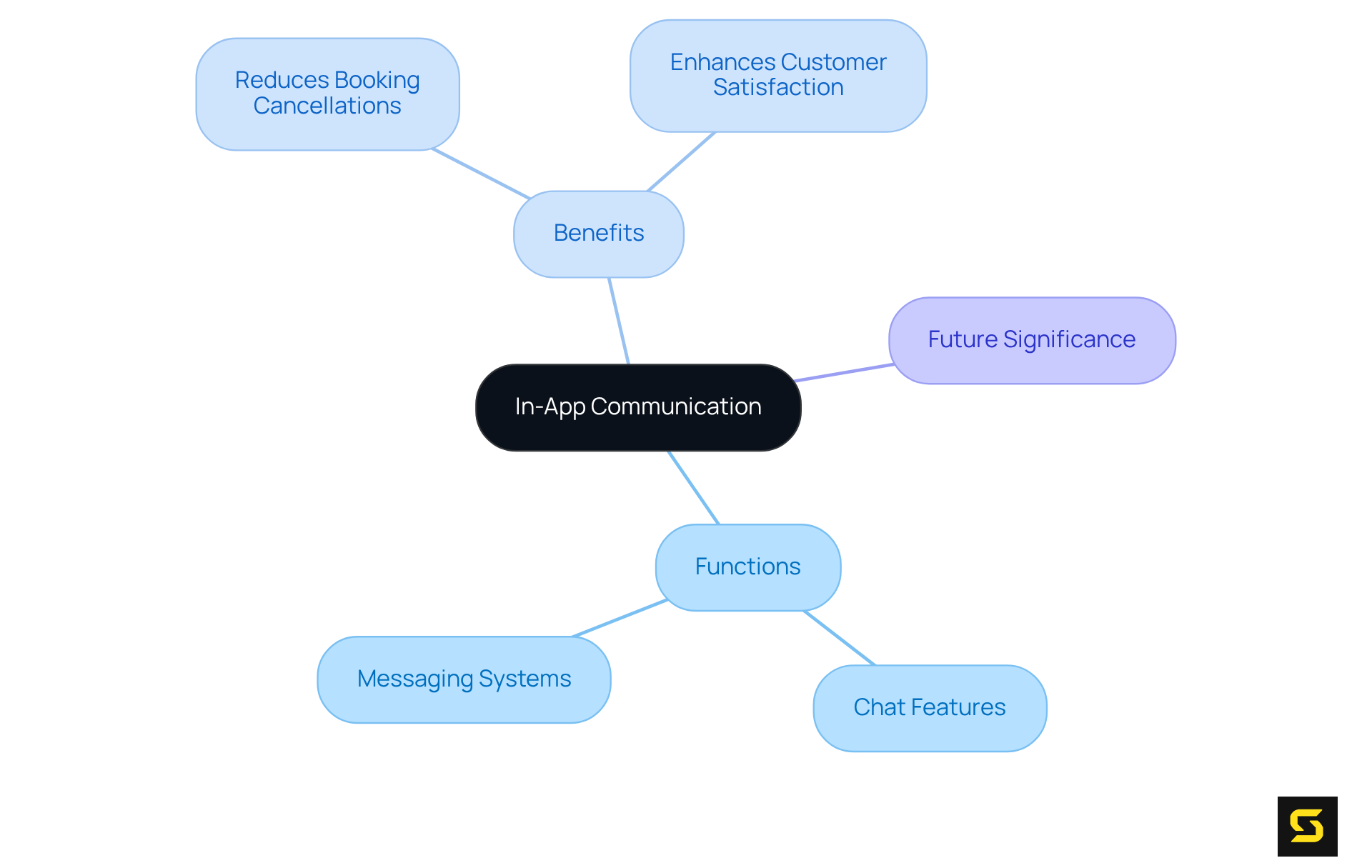
Advanced Analytics: Leveraging Data for Continuous Improvement
Incorporating advanced analytics into on-demand applications is not just beneficial; it’s essential for effectively monitoring individual behavior and app performance. By leveraging data insights, organizations can pinpoint trends and understand customer preferences, which informs strategic decisions aimed at enhancing app functionality. For instance, applications that utilize real-time analytics have shown a remarkable 40% improvement in long-term engagement through tailored onboarding experiences, as highlighted in recent studies.
Moreover, data-driven enhancements can significantly boost retention rates. AI tools are now capable of forecasting user behavior with impressive accuracy, leading to retention increases of up to 30%. This ongoing improvement, fueled by these insights, is crucial for staying competitive in the fast-paced app market. Successful applications demonstrate this by swiftly adapting to user feedback and market demands.
Key metrics such as Daily Active Users (DAU) and Monthly Active Users (MAU) are vital for measuring engagement and retention. Tools like Google Analytics for Firebase and Adobe Analytics provide the necessary framework for implementing these analytics effectively.
In conclusion, the integration of advanced analytics is not merely an option; it’s a strategic imperative for organizations involved in on-demand app development aiming to thrive in today’s digital landscape. Embrace these insights and transform your app’s performance today.

Robust Admin Panel: Essential for Effective Management
A robust admin panel is not just beneficial; it’s essential for the effective management of on demand app development, acting as the backbone for operational efficiency. It equips administrators with vital tools to monitor app performance, manage accounts, and execute content updates seamlessly. By focusing on accessible design and a comprehensive feature set, administrators can uphold high operational standards and respond swiftly to client demands.
Effective admin panels must incorporate features such as:
- Role-based access control
- Real-time data monitoring
- Customizable workflows
- Bulk actions
- Inline editing capabilities
These elements not only enhance security but also streamline processes. Furthermore, search and filtering functionalities are crucial for efficiently managing large datasets.
Statistics reveal that organizations leveraging advanced admin panel functionalities are significantly more likely to achieve operational success. Data-driven companies are 23 times more likely to acquire customers and six times more likely to retain them. Case studies, such as the redesign of the Snapbus administration panel, illustrate how customized admin tools can enhance user experience and operational efficiency, ultimately aligning better with expectations.
By incorporating these best practices, developers can build admin panels that not only meet but exceed the requirements of on demand app development for effective app management. Remember, "For administrators, the main purpose of using such a product is mainly to ensure the smoothness of the process and customer service." Now is the time to elevate your admin panel design and drive operational excellence.

Scalability: Ensuring Growth and Adaptability
Scalability stands as a pivotal characteristic of on demand app development, enabling these applications to expand and adapt in response to increasing demand. During on demand app development, developers must prioritize scalability in the design phase, ensuring that the app's architecture can accommodate more users and functionalities without sacrificing performance. This strategic focus is vital for sustaining client satisfaction and operational efficiency as the application evolves.
Consider successful examples of scalable architecture, such as microservices. These allow individual components to be updated independently, enhancing flexibility and optimizing resource utilization. Additionally, on demand app development benefits from cloud integration, which provides resources to handle traffic spikes and ensures that applications can scale seamlessly.
By concentrating on these design principles and conducting comprehensive market research to grasp the needs of the target audience, developers can craft applications that not only satisfy current demands but also adapt to future growth. This approach guarantees long-term success in a competitive landscape. Are you ready to elevate your application development strategy? Focus on scalability today!

Customer Support System: Addressing User Needs Promptly
Incorporating a robust customer support system within on demand app development is essential for swiftly addressing client needs. Elements such as live chat, comprehensive FAQs, and efficient ticketing systems ensure that users can access help whenever they encounter issues. By prioritizing customer support, you not only enhance user satisfaction but also cultivate loyalty—an indispensable factor for the long-term success of your app.
Consider this: statistics reveal that 89% of consumers are more likely to make repeat purchases following a positive customer service interaction. This underscores the critical importance of effective support. Conversely, 63% of consumers would switch to a competitor after just one negative experience, highlighting the necessity of maintaining high service standards.
To implement customer support effectively in your app, adhere to best practices:
- Ensure accessibility
- Provide timely responses
- Adopt a blended model that combines AI with human agents to handle inquiries efficiently
This approach not only boosts efficiency but also enhances client satisfaction by aligning tasks with the appropriate channel.
By focusing on these key elements, developers can create a user-centric experience that significantly contributes to the overall success of on demand app development. Don’t underestimate the power of exceptional customer support—it's a game changer in today’s competitive landscape.

Conclusion
The success of on-demand app development fundamentally relies on integrating essential features that significantly enhance user experience and operational efficiency. By prioritizing elements such as:
- Geolocation
- Secure payment gateways
- User-friendly design
- Push notifications
- In-app communication
- Advanced analytics
- Robust admin panels
- Scalability
- Effective customer support
developers can craft applications that not only meet but exceed user expectations.
Each feature's significance is paramount. Geolocation capabilities provide real-time tracking, fostering trust among users. Secure payment systems bolster customer confidence, while a user-centric UI/UX design amplifies engagement. Strategic push notifications keep users informed and connected, enhancing their overall experience. Furthermore, in-app communication facilitates seamless interactions, advanced analytics drive continuous improvement, robust admin panels streamline management, scalability ensures adaptability, and effective customer support promptly addresses user needs.
In conclusion, prioritizing these key features is essential for thriving in the competitive landscape of on-demand services. Embracing these advancements not only elevates the user experience but also positions applications for sustained growth and success. For organizations aiming to lead in this dynamic market, investing in these essential elements is not merely advisable—it's imperative.
Frequently Asked Questions
What does SDA specialize in?
SDA specializes in custom software development, particularly for applications that require immediate access, ensuring that each application is tailored to meet the distinct needs of its clients.
How does SDA approach software development?
SDA employs a user-centric design philosophy and collaborates closely with product owners to craft solutions that are functional and strategically aligned with overarching business goals.
Why is geolocation important in modern applications?
Geolocation features are essential for modern applications, particularly ride-sharing apps, as they provide precise arrival times and enable effective route monitoring, fostering trust and satisfaction among users.
How does real-time tracking affect user retention?
Applications that offer real-time tracking have shown a significant boost in retention rates, with 88% of individuals less likely to return after a negative experience.
What is the significance of user-initiated geolocation requests?
User-initiated geolocation requests enhance trust, as they consistently score higher on trust scales compared to automatic prompts, emphasizing the importance of user agency in the digital experience.
Why is a secure payment gateway necessary for on-demand applications?
A secure payment gateway is crucial for processing transactions as it safeguards sensitive information, boosts the app's credibility, and helps maintain customer trust, promoting repeat business.
What are the benefits of implementing robust encryption methods in payment gateways?
Robust encryption methods protect users' sensitive information and enhance the brand's reputation, making customers more likely to engage with the app repeatedly.
What should businesses prioritize to ensure a trustworthy user experience?
Businesses should prioritize implementing a secure payment gateway to protect customer information and foster loyalty, driving growth in a competitive digital landscape.





